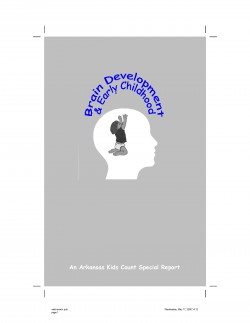
ANYONE WHO HAS HELD an infant or young child in her arms understands how precious and vulnerable children are in their early years of life. Over the years, researchers have discovered many of the ways children learn and develop, as well as what is important in the early training they receive. Recently, new scientific studies have documented what occurs in the brain during a child’s first years of life, and are now predicting what can give a child the best chance of success in achieving an independent quality of life.
Early brain development is critical to positive or negative outcomes for children and adults. The first days and years of life are experienced in a way very different from later years. The biological changes, the formulation of new cells, new neurological pathways, and imprints from new experiences during these formative years have profound and lasting impacts on a child’s life. Scientists have used advanced imaging technology to illustrate how rapidly a child’s brain grows during the first three years of life. This technology has enabled them to see the results of early nurturing and a stimulating and rich environment on the brain’s development.
This information must inform parents and policy-makers as they struggle to respond to changes in child-rearing practices and shifts in the patterns of work that have moved more and more mothers into the workforce. These changes are seen most dramatically in the dynamics of by whom and how young children today are reared. Policy-makers are confronted with a task of marrying the research with reality and determining the best methods for supporting families in the development of their children, particularly during their critical formative years between birth to age 5.
